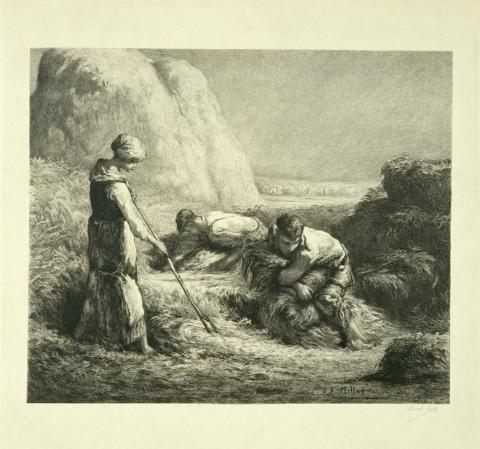"The Hay Trussers", 1850 Salon, by Jean-François Millet (1814-1875)
While some of his works had passed through the gallery in the 1870s, the House of Goupil did not truly begin to take an interest in Jean-François Millet until the 1880s. In 1881, it sold The Gleaners in New York and The Hay Trussers to a French collector. In the same year, it decided to sell these two works in the form of etchings. This technique produces work with fluid lines and very deep blacks, perfectly suited to the style of the artist.
The current engraving of The Hay Trussers is a "before letter" proof, in other words before the addition of the title and the name of the painter, engraver and publisher which results in a limited edition. In addition, it is signed by the engraver. All of these details increase its price and make it more rare. The choice of the technique and presentation indicate that this type of image was aimed at the small group of well-informed art lovers.
Somewhat later, the photomechanical procedure of chromotypogravure (often simply called "chromo") made possible from 1890 the mass distribution, still by the House of Goupil, of reproductions of The Gleaners and of The Angelus, and the recognition of Millet by a wider audience.

